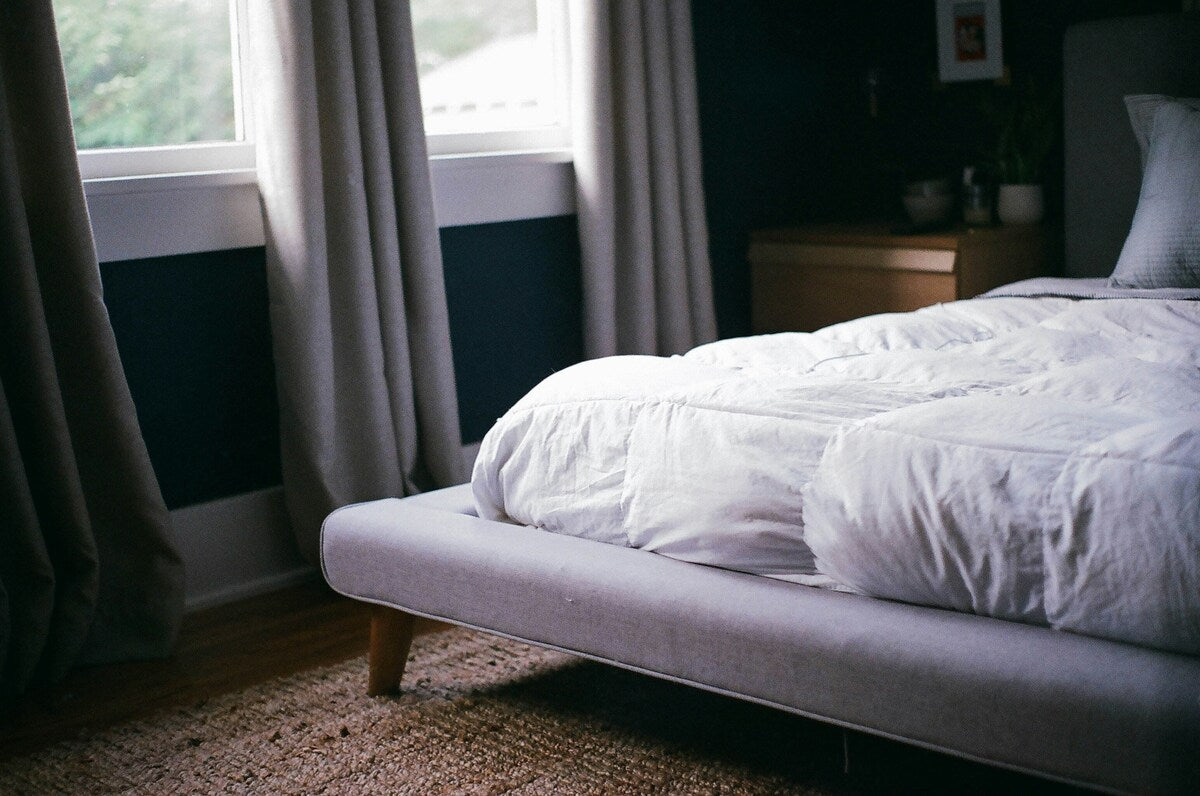
How to Choose a Mattress Topper
|
Time to read 4 min
This store requires javascript to be enabled for some features to work correctly.
Written by: Editorial Team
|
Time to read 4 min
Every bedding stockist worth its salt will offer a mattress topper as part of a complete bedding set - and it's not simply a trick to get you to part with more of your cash. A mattress topper serves multiple purposes - from making your bed more comfortable and keeping it clean and allergen-free, to even reducing aches and pains in your daily life.
Before buying a mattress topper, it is important to know how they function fully, and what different types of mattress topper can offer. Here's your handy guide to the product - for side sleepers, back sleepers, and beyond.
As the name suggests, a mattress topper is an additional top layer placed over the mattress and underneath a fitted sheet. This creates an extra barrier between the top sheet that you lay on and your mattress. In some ways, its an extension of the mattress, adding a more mobile, comfortable layer while protecting the notoriously hard to clean mattress.
A mattress topper is a little fraction of bedding material that goes a long way. While something so small can seem inconsequential, there are several reasons why they are essential for any and all bedding sets.
As with purchasing any piece of bedding, its best to research the options available to you before committing to sleeping with something every single night. The biggest factors to consider when purchasing a mattress topper is if whether you fit into one of the following categories:
Side sleepers should consider purchasing a mattress topper that is firm and offers bodily support, to avoid injury from elevated pressure in the shoulders and hips.
A firmer, denser mattress topper would better suit a back sleeper. Too soft a layer for the back would result in poor spinal alignment and posture while sleeping, potentially causing pain, discomfort, and the creation or worsening of chronic back issues.
People with pre-existing back problems should also consider a firmer mattress topper for proper support and spinal alignment during sleep. Latex material and memory foam toppers are also great for providing comfort that adjusts and moulds to your body, providing support at the pressure points that require it the most.
Just like any other bedding type, allergy sufferers should research hypoallergenic materials available, such as:
This is especially the case for a mattress topper. The ideal mattress topper should block pet hair, dust mites, and other allergens from becoming embedded in the mattress, wicking away these irritants as well as moisture to prevent a reaction. Choosing a topper from one of the materials from the list above plays a big role in ensuring your bed stays allergen-free.
A mattress topper is essential for your bed if you want to keep your mattress clean, soft, and comfortable.
Researching mattress toppers using the information listed above before you buy is essential to get maximum benefit.
Many reputable brands offer warranties on their mattress toppers. Check the retailer's specific terms and conditions for details before purchasing.
Yes, but ensure the topper is flexible enough to move with the bed. Memory foam and latex toppers are usually compatible with adjustable beds.
Most mattress toppers can be spot-cleaned, hand-washed or machine-washed, depending on the material. Always check the care instructions before beginning cleaning.
The Myza Editorial Team
The Myza Editorial Team works together to create and curate The Sleep Journal, a series of blog posts designed to help our customers with frequently asked questions and curiosities regarding everything in the world of sleep, from sleeping positions to skin and hair care. We also provide regular shopping guides, interviews, and reviews to provide insight into our hand-picked brand collaborations and the benefits they have to offer.
Related product
The Prestige Bamboo Mattress Topper
£129.99
Receive 10% off your first order when you subscribe to our newsletter


